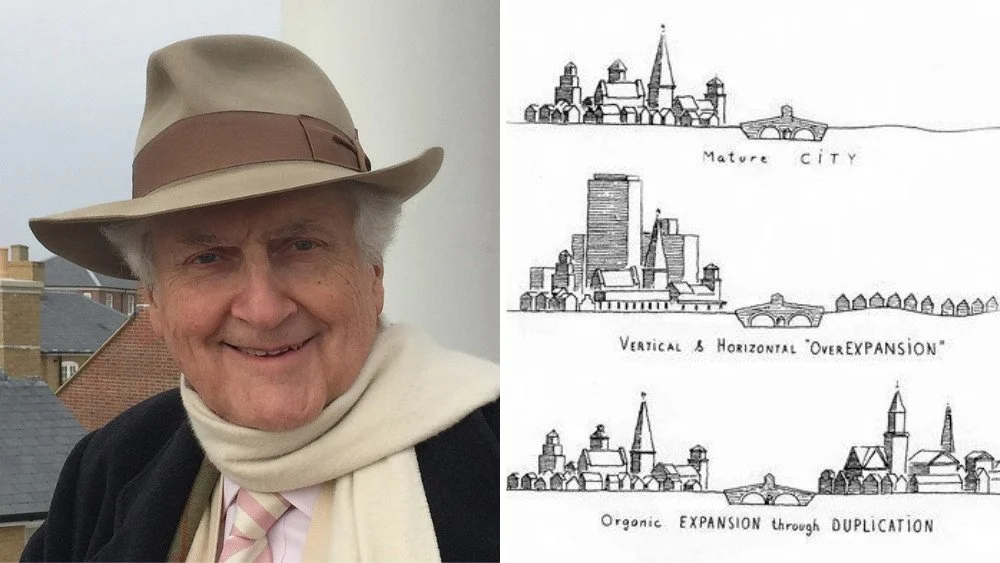Editor's Note: The challenges our cities face are growing, but so is the strength of this movement. Every story we share, every idea we spread, and every tool we build exists because people like you are committed to showing up. Your membership isn’t passive—it’s the momentum that makes change possible.
“This issue is both a housing issue and a civil rights issue,” Colorado Governor Jared Polis said during a bill-signing ceremony outside the state’s Capitol. “It really is both. For housing, the opportunity for people to officially be on the lease — it gives them protections, allows them to start establishing their credit, gives them the certainty that they get to live here.”
Polis was signing HB24-1007 into law. As of July 1, 2024, local governments in Colorado will be prohibited from restricting how many unrelated roommates could live under one roof unless a strong case can be made for health, safety or fire code needs.
Previously, different municipalities in Colorado were able to implement restrictions at their discretion. Fort Collins, for example, limited occupancy to three unrelated tenants, which meant that in homes with upwards of four bedrooms (not including basements and garages) tenants would be subsidizing empty rooms, whether or not they made use of them.
“There are rooms within homes that are empty, not because somebody doesn't want another person to live there, but simply because it's against the rules in that city to have someone who doesn't share your last name or isn’t related to you by blood live there,” Representative Manny Rutinel told me. The realization that bedrooms were legally incentivized to sit empty while Coloradans were being categorically priced out of entire neighborhoods and cities was reason enough for him to sponsor HB24-1007. “The fundamental reason is to address the housing affordability crisis.”
Of course, tenants wanting to deflate their rent would offer up the spare rooms and those in need of housing would occupy them, despite the illegality. “I live in a five-bedroom house where myself and each of my roommates have our own room. Only three people are legally allowed to be on the lease, which meant that two of us are just hanging out, quietly,” Chase Cromwell, a University of Colorado Boulder senior, told the Denver Post. “We’re afforded none of the legal protections that come with being on a lease.”
Situations like Cromwell’s were commonplace, especially among students, who compose the largest share of cohousing between unrelated individuals. However, students weren’t the only ones living in precarity. “What about the live-in caretaker?” Strong Towns staff writer Ben Abramson asked. “Or giving seniors the option to leverage their empty bedrooms?”
Last year, Abramson wrote about “aging in place” and how the baby boomer generation — often envied for having inherited an age of prosperity foreign to today’s youth — is weathering the same housing crisis keeping younger generations out of homeownership.
“Many older Americans hold large, detached homes in car-dependent suburbs,” he writes. On average, those homes have 20% more bedrooms than people, with seniors occupying 951 square feet per person, on average, compared to the 500 square feet people aged 25-34 occupy.
The problem, Abramson highlights, is that seniors aren’t necessarily interested in occupying so much space on their own. Yet, through a combination of strict zoning codes, homeowner association bylaws, and ordinances like the one just repealed in Colorado, they don’t have a choice. Empty nesters cannot sublet long-vacant bedrooms, subdivide their land to suit their current needs or welcome roommates to help lower living costs.
From housing scarcity to legal precarity, there was no shortage of reasons to scrap the roommate restrictions. Yet, as Rutinel and the bill’s cosponsors were drafting the document, one question remained: Why do these restrictions exist in the first place?
How Did We End Up Here?
In the early 20th century, many housing ordinances arose out of the progressive health and safety movement, Daniel Herriges, who coauthored "Escaping the Housing Trap," told me. “We were dealing with issues like overcrowding, unsanitary air, fire risk, and so on.”
New York City’s tenement reforms were indeed motivated in part by growing concerns over public health as it relates to overcrowding. Households of five or more people would be cramped into a housing stock best remembered for its poor construction, shared hallway toilets, windowless rooms, shady landlords and poorly managed waste disposal. With the absence of medical advancements to mitigate the spread of disease, tenements of the late 19th and early 20th centuries were a breeding ground for germs, illness and death. There was a real need for higher-quality housing, and there were real concerns over the conditions of tenement neighborhoods.

(Source: “Good Tenements For A Million People, the Story Of New York's Successful Fight For Better Housing” by Emily Wayland Dinwiddie circa 1909 publication unknown, collection of Maggie Land Blanck.)
Yet, it’s also true that many of these concerns were couched in prejudices. “There were notions of what was a ‘morally suitable’ way to live and so on … you can clearly see the prejudices made along racial and ethnic lines,” Herriges added.
This is maybe best captured by the term, “lodger evil.” The term gained currency in the first decade of the 1900s to describe a practice popular amongst Southern and Eastern European immigrants in the urban centers of the Northeast and Midwest. Families would sublet part of their apartments to lodgers — often unmarried men coming from the same ethnic group — in an attempt to save on rent. Some of the lodgers were family members. Others had no relationship to their subletters. Some had plans to return to their country of origin after making a bit of money, and others would constitute the next generation of the Polish, Bulgarian or Ukrainian diaspora in the United States.
While the turn of the century brought newfound anxiety over lodging, this type of arrangement was not uncommon before the 1900s. In fact, the census rolls of 1850 indicate that a lodger was present in 35% of households in cities of fifty thousand or more people. By 1900, that number dropped to 21%.
So, it’s not that lodging was new. What was markedly different by the turn of the century, however, was the sheer volume of immigration and the subsequent density of people in select American cities. “In 1894, parts of Manhattan recorded the highest population density in the world,” David and Linda Beito wrote in "The 'Lodger Evil' and the Transformation of Progressive Housing Reform, 1890–1930." “The most congested wards in the Lower East Side had between 366 and 701 people per acre. … The Polish quarter in [Chicago] had more people per acre than the most congested areas of Tokyo or Calcutta. … All of this crowding took place before the advent of the skyscraper.”

It’s No Longer About Public Health
Over a century later, arguments against crowding that cite public health are null and void, Herriges says. “We have modern sanitation in a way that we didn’t back then.”
However, many of the ordinances of that era were never updated to reflect modern technological and medical advancements. “In many cases, these ordinances tend to stay on the books as a legacy of this time when it was hard to disentangle what were legitimate health and welfare motivations [and what were] objections to certain populations,” he adds. And, like with parking and zoning laws, there’s a latent assumption that if these rules exist, there must be a good reason.
Herriges is doubtful that these rules persist because decision-makers and constituents sincerely believe in the math of occupancy limits or fear the spread of disease. Instead, the inertia can be attributed in part to the notorious pace of governance. For example, today’s cities aren’t sending personnel to inspect homes and enforce the limits. As a result, they’re “out of sight, out of mind,” and reforming them falls to the wayside.
At the same time, when occupancy limits do come up, he’s noticed they’re summoned to serve as a bulwark against densification. “You see this when residents are opposed to adding more people to their neighborhood,” he says. Constituents fearful of increased neighborhood traffic or competition for “their” street parking will cite the dangers of overcrowding in arguments that otherwise resemble those opposing all new development. Having occupancy limits on the books legitimizes those arguments, even if they are made in bad faith or with ulterior motives.
“You’ll see people leverage occupancy limits and argue against overcrowding … but my view is that we know cities can sustain much higher densities than exist almost anywhere in America and that it’s compatible with a really high quality of life,” Herriges explains, adding that whatever issues arise downstream of densification — like parking, sanitation or the distribution of public space — should be dealt with directly and not through misguided concerns over public health. “At this point, there’s no legitimate public health or safety justification for these limits.”
It’s About Time
Like with restrictive zoning or parking mandates, occupancy limits have long outlived whatever benefits justified their origins. So, why did this change take so long?
HB24-1007 wasn’t the first time Colorado endeavored to eliminate occupancy limits. In the past, the idea was snuck into comprehensive housing reform packages that inevitably shrank as elected officials took issue with particular details. This time, a couple of tweaks brought it to the finish line, but there’s still some unease.
“For some people, it’s a matter of local control,” Rutinel shared, though he doesn’t see the latest move as an example of state overreach. In fact, he says it’s the opposite: “In reality, the government should not be in the business of telling you who is worthy of living next to you based on whether they share your last name,” he explained. “And ultimately, it touches on property rights. If you’ve got a property, you should be able to use it in the ways that you deem fit.”
He and the law’s cosponsors modeled their language after what they saw in Washington and Oregon, two states that have also lifted roommate restrictions.





